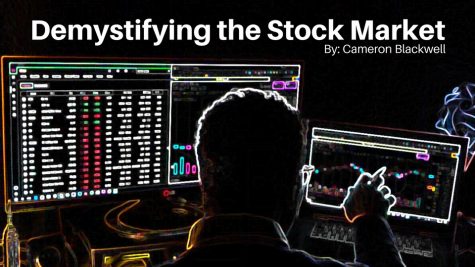Traveling the road to financial literacy
We all hear about the stock market, but what is it really? Throughout the span of the next 12 weeks I will be discussing the history, mechanics and news regarding the US stock market. The goal of this blog will be to demystify the stock market to the average person so that they can manage their own financial portfolio.
In defining what the stock market is, one must understand how the exchanges work. There are two main US stock market exchanges: New York Stock Exchange (NYSE) and the NASDAQ. An exchange is where a company’s stock is traded on the open market. A stock is an official share of ownership in a company.
Because humans have the inclination or desire to own something, stocks are frequently exchanged from person to person or entity to entity in which billions of shares are traded daily. In contrast to large financial institutions, the average person is not permitted to trade shares on these exchanges.
If an average US citizen wants to trade shares of a particular company on an exchange, they must go through a broker. If you have ever seen the movie or read the book “The Wolf of Wall Street,” the company portrayed in the story, Stratton Oakmont, is an example of a stock brokerage. A broker is the person or entity that serves as the “middle man” for a transaction between a buyer and seller.
When someone wants to trade on the stock market, they typically go through one of the countless online brokerages such as Etrade, TD Ameritrade or Fidelity. These companies pair a buyer and a seller for “shares of stock” in a corporation. These online brokerages typically charge a brokerage transaction fee on each side of the transaction of anywhere between three to ten dollars every time a trade is made.
There are many investment professionals around the world and on Wall Street who parade around in ridiculous suits and who would love to manage your money. In reality, suits mean nothing and don’t necessarily establish credibility.
In case you were wondering what exactly “Wall Street” is, it is simply a street in New York City that is home to the largest and most influential financial institutions in the world (investment banks, exchanges, etc.).
I believe it is important that every individual has an understanding of their own financial assets. It is also imperative that people realize that hiring an investment professional who takes a percentage of your earnings is completely unnecessary. Most investment professionals recommend the same thing to each of their clients: diversification (a concept and practice I will dig into extensively in the next few weeks).
The concept of “diversifying your investment portfolio” in order to mitigate risk is something easily achievable on one’s own through a variety of financial instruments such as ETFs (Exchange Traded Funds) and index funds. While Wall Street firms syndicate these financial instruments, paying an active financial manager is unnecessary. By managing your own investment portfolio, you can achieve similar/better annual returns via financial instruments and fee reductions.
Join me in the coming weeks every Friday to learn and earn your way to financial literacy.
DISCLAIMER: Cameron is not a certified financial advisor and all things stated should be considered solely as entertainment and NOT for financial transactions.

Cameron Blackwell is a sophomore in his first year of Publications. He is excited to see his interest journalism evolve in the Publications class. Outside...



